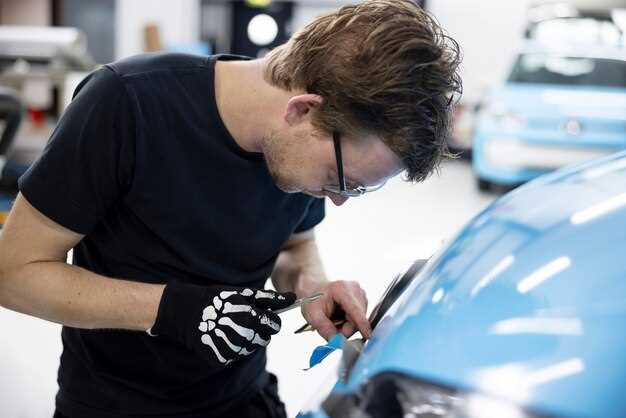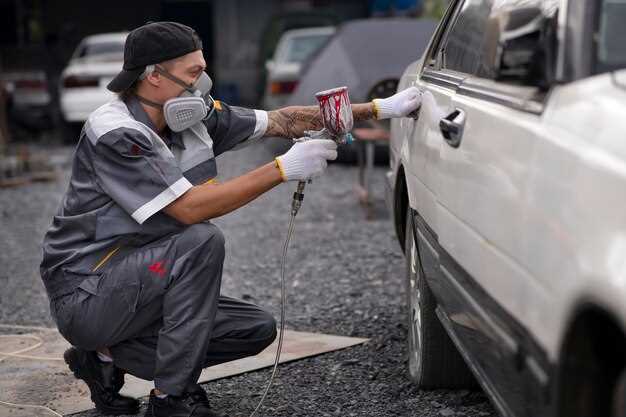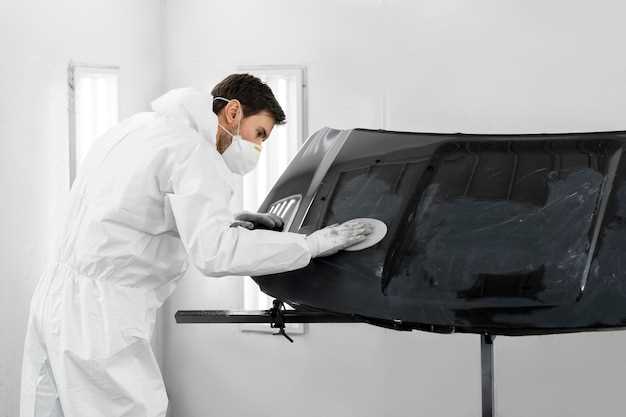Fixing Dents Without Repainting – PDR Explained

In the world of automotive repair, paintless dent removal (PDR) emerges as a revolutionary solution for restoring the aesthetic integrity of vehicles without the need for extensive repainting. This technique focuses on the removal of dents and dings from the metal surfaces of vehicles, using specialized tools and methods to gently massage the damaged area back to its original form. PDR is not only a cost-effective alternative but also a time-efficient option for car owners looking to maintain their vehicle’s value.
One of the most significant advantages of PDR is its ability to preserve the factory finish of the vehicle. Traditional dent repair methods often involve sanding, filling, and repainting, which can alter the original paint quality and color match. In contrast, PDR’s non-invasive approach ensures that the original paint remains intact, allowing for a seamless repair that is virtually undetectable. This is particularly important for car enthusiasts and those who value the pristine condition of their vehicles.
Furthermore, PDR techniques can be applied to a variety of dent types, from minor hail damage to larger creases. Skilled technicians assess the nature of the dent and apply the appropriate tools and strategies for effective removal. As a result, customers benefit from a quicker turnaround, often receiving their vehicles back in a fraction of the time compared to traditional body shops. Embracing PDR not only enhances the visual appeal of a vehicle but also supports environmentally friendly practices by reducing waste and harmful emissions associated with conventional repair methods.
Understanding the Basics of PDR: Tools and Techniques

PDR, or Paintless Dent Repair, is a specialized method for removing minor dents from the body of a vehicle without the need for repainting. This technique is especially effective for small dings and dents caused by hail, door swings, or minor collisions. To successfully perform PDR, a variety of tools and techniques are employed that focus on manipulating the metal back to its original shape.
The key tools used in PDR include metal rods, rubber hammers, and adhesive tabs. Metal rods, often referred to as “push rods,” come in various shapes and sizes to allow for access in tight spaces. These rods are used to push out the dent from behind the panel. Rubber hammers are utilized to tap down any raised edges around the dent, ensuring a smooth finish. Adhesive tabs can be bonded to the dent’s surface and pulled, which helps in removing the dent from the front side of the panel.
One essential technique in PDR is the “push and pull” method. This involves pushing the metal from behind the panel while simultaneously applying tension to pull the dent forward. This technique is particularly effective for larger or more stubborn dents. Another common technique is using a “strategy light,” which illuminates the surface and highlights the imperfections, allowing for precise adjustments as the dent is being worked on.
Understanding the composition of the vehicle’s body is crucial in PDR. Different metals react differently to the tools and techniques used. For instance, aluminum panels may require different handling compared to steel panels, as they are more prone to stretching and can be more challenging to repair without causing further damage.
In summary, PDR is a practical approach to dent repair that emphasizes the efficient use of specialized tools and techniques. By understanding these fundamentals, technicians can effectively restore a vehicle’s appearance while preserving its original paint finish, making PDR an advantageous option for dent removal.
Step-by-Step Guide to Removing Dents Using PDR

Removing dents using Paintless Dent Repair (PDR) involves a series of precise steps. This method is effective for various types of dents while preserving the vehicle’s original paint. Follow this guide to effectively utilize PDR techniques for dent removal.
Step 1: Assess the Damage – Begin by examining the dent closely. Determine its size, depth, and location on the vehicle’s surface. Check if the paint is cracked or chipped, as this may influence the PDR process.
Step 2: Gather Tools – Collect the necessary tools for the job. Common tools include a PDR rod, a glue gun, pulling tabs, and a tapping tool. Ensure that all tools are clean and in good condition to avoid further damage to the vehicle.
Step 3: Prepare the Area – Clean the area around the dent thoroughly. Use a microfiber cloth to remove dirt and debris. This step is essential to prevent scratching the paint during the repair process.
Step 4: Apply Glue – If using a glue-pulling method, apply a small amount of hot glue to the pulling tab. Position the tab in the center of the dent, ensuring a secure bond. Allow the glue to set for a few minutes.
Step 5: Pull the Dent – Once the glue is set, use the pulling tool to gently pull the tab. Apply consistent pressure to gradually lift the dent. Be careful not to pull too hard, as this may cause further damage.
Step 6: Tap the Area – After pulling, use a tapping tool to massage the area around the dent. This technique helps to relieve tension in the metal and encourages it to return to its original shape. Repeat the pulling and tapping process as necessary.
Step 7: Evaluate Progress – Continually assess the dent’s status as you work. Check if additional pulling or tapping is required. Patience is key; it’s better to take your time than rush the process.
Step 8: Remove Excess Glue – Once the dent is removed to your satisfaction, carefully clean off any remaining glue. Use a glue remover solution, following the manufacturer’s instructions to avoid damaging the surface.
Step 9: Final Inspection – Conduct a final inspection of the repair area. Ensure that the surface is smooth and free of any imperfections. If necessary, touch up any areas that may require additional work.
Following this step-by-step guide will allow you to effectively remove dents using PDR techniques. Mastering these methods can save both time and money while maintaining your vehicle’s appearance.
Common Mistakes to Avoid in Paintless Dent Repair
When engaging in paintless dent removal, avoiding common pitfalls can significantly influence the outcome of the repair. One of the most frequent mistakes is underestimating the damage. Assessing the depth and location of the dent improperly can lead to ineffective removal techniques and potential harm to the vehicle’s surface.
Another critical error is neglecting the proper tools. Using inadequate or incorrect tools may not only fail to remove the dent effectively but also cause additional damage to the paintwork. Investing in high-quality, specialized tools designed for paintless dent repair is essential for achieving optimal results.
Rushing the Process is another common mistake. Dent repair requires patience and precision. Hurrying through the procedure can lead to a subpar finish. Take the time to manipulate the metal carefully, ensuring a smooth and flawless restoration.
Improper lighting conditions can impact the accuracy of the repair process. Inadequate lighting can prevent thorough inspection and hinder the technician’s ability to see the dent properly. Utilizing adequate lighting will ensure clear visibility, thereby enhancing the overall effect of the removal.
Lastly, it’s crucial to overlook pre-repair preparation. Failing to clean the area around the dent can lead to contamination and decreased effectiveness of the repair. Always ensure the surface is clean and free of debris before starting the dent removal process.

